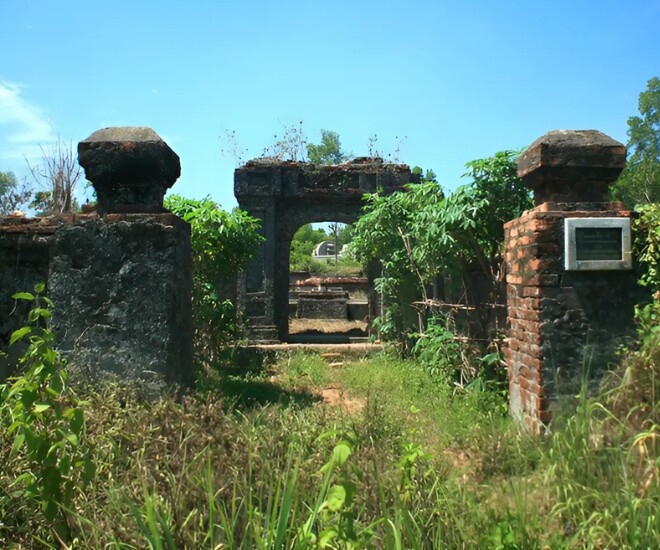Impressed by the “King of Ao Dai” and a Solid Backend Called Chiêu Nghi
Nguyễn Phúc Khoát was the first to officially assume the title of king in Đàng Trong, adjusting the court structure, and building a centralized and efficient administrative system. In foreign affairs, he maintained a stable relationship with Đàng Ngoài for a long period, thanks to his skillful diplomacy and strong military.
Less mentioned but equally important is the influence of Lady Trần Thị Xạ, also known as Chiêu Nghi. She was a well-educated woman with a strong sense of propriety and played a crucial role in maintaining order within the royal household. While legends and historical records provide scarce details about her, her separate and solemn tomb in the Kim Ngọc mountain range (now in Thủy Xuân ward, Huế city) underscores her special position in the court. Her presence as the primary wife also symbolized the image of a court lady during the Nguyễn Lords’ era – discreet yet indispensable in maintaining order and the prestige of the royal family.

Given these contributions, Chiêu Nghi’s tomb is not only the resting place of a noble lady but also a rare remnant that helps later generations envision the past grandeur of the court.
On July 22, 1750, Chiêu Nghi fell seriously ill and passed away at the young age of 35. The Lord deeply mourned her death and bestowed upon her the title of Chiêu Nghi Liệt Phu Nhân, with the posthumous name Từ Mẫn. He also erected a large stele in front of her tomb, recording her virtues and expressing his grief. The stele, made of stone and standing 3.1 meters high and 1.4 meters wide, was originally housed in a pavilion that has since collapsed. Despite nearly 300 years of exposure to the elements, the stele’s inscriptions and intricate carvings remain remarkably clear.
The Only Unvanquished Tomb: A Mystery Unsolved
Nestled on a small hill in Ngọc Hồ village, Hương Thọ commune, about 12 kilometers from the center of Huế, Chiêu Nghi’s tomb stands in humble contrast to the grandiose tombs of the Nguyễn Dynasty. Its construction began in 1750, following the passing of Lady Trần Thị Xạ at the age of 34.
According to scholars, this tomb is the only one from the era of the Nguyễn Lords that remains intact in Huế, despite the tumultuous events involving the Trịnh Lords and, later, the Tây Sơn Dynasty in the late 18th century. When Gia Long, or Nguyễn Ánh, established his empire, the architectural design of Chiêu Nghi’s tomb served as a model for the restoration of the destroyed tombs of the previous Nguyễn Lords.
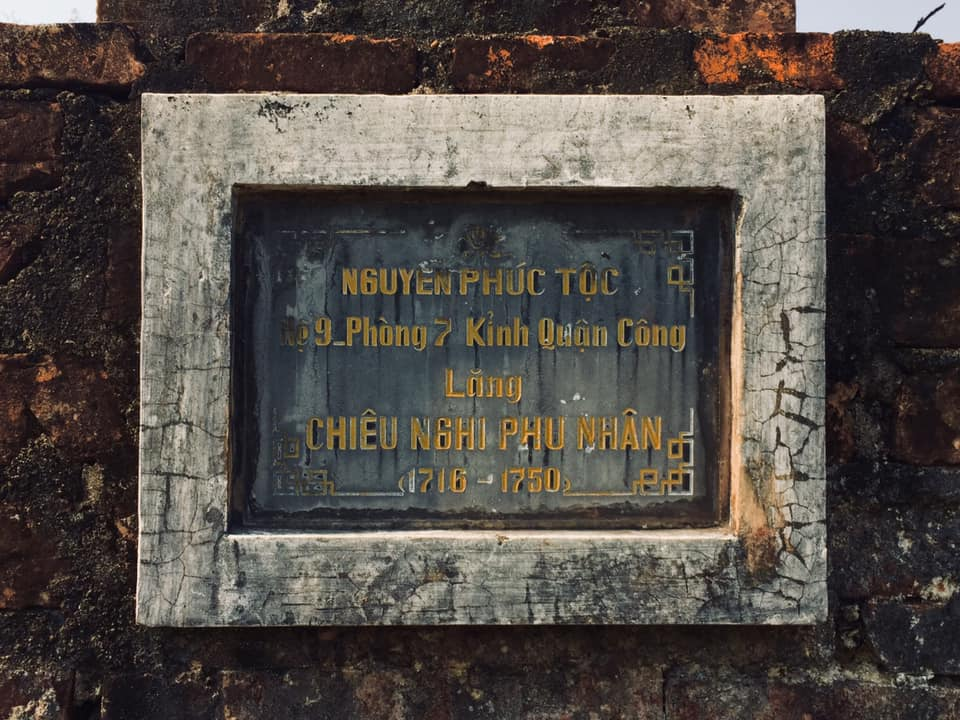
The stele clearly identifies Chiêu Nghi as the wife of Nguyễn Phúc Khoát.
It is known that all the tombs of the Nguyễn royal family were destroyed. Historical records indicate that after capturing Phú Xuân in 1790, the Tây Sơn army systematically demolished the tombs and steles of the Nguyễn Lords to erase their history. However, Chiêu Nghi’s tomb remained untouched, and the reason for this exception remains a mystery to scholars.
The tomb of Lady Trần Thị Xạ is constructed with two concentric brick walls. The outer wall measures 39 meters by 33 meters and stands nearly 1.8 meters tall, featuring two gate pillars. The inner wall is slightly smaller, reaching a height of 1.68 meters, with a vaulted entrance nearly 2 meters tall, leading to a tranquil space. At the center lies a raised earthen platform, upon which sits a two-tiered rectangular tomb built with bricks and plastered with lime. However, the passage of time and external forces have caused the plaster to peel away, inadvertently revealing the exquisite construction techniques of the past.
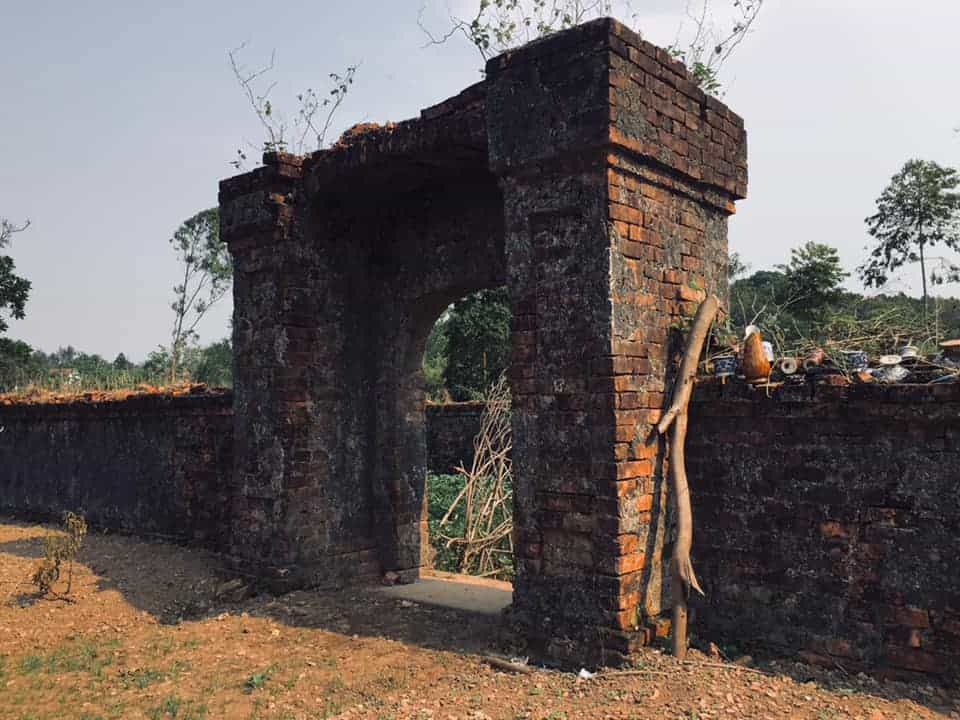
The entrance gate to the tomb served as a model for the remaining tombs of the nine Nguyễn Lords.
About 8 meters beyond the outer wall stands the stone stele house, inscribed with 883 Chinese characters detailing the life and virtues of Chiêu Nghi and expressing the Lord’s grief. The stele’s forehead is adorned with a stylized phoenix, and its sides feature intricate cloud and leaf carvings. Nearly 300 years later, the tomb still stands proudly amidst nature, a lasting testament to a glorious royal era.
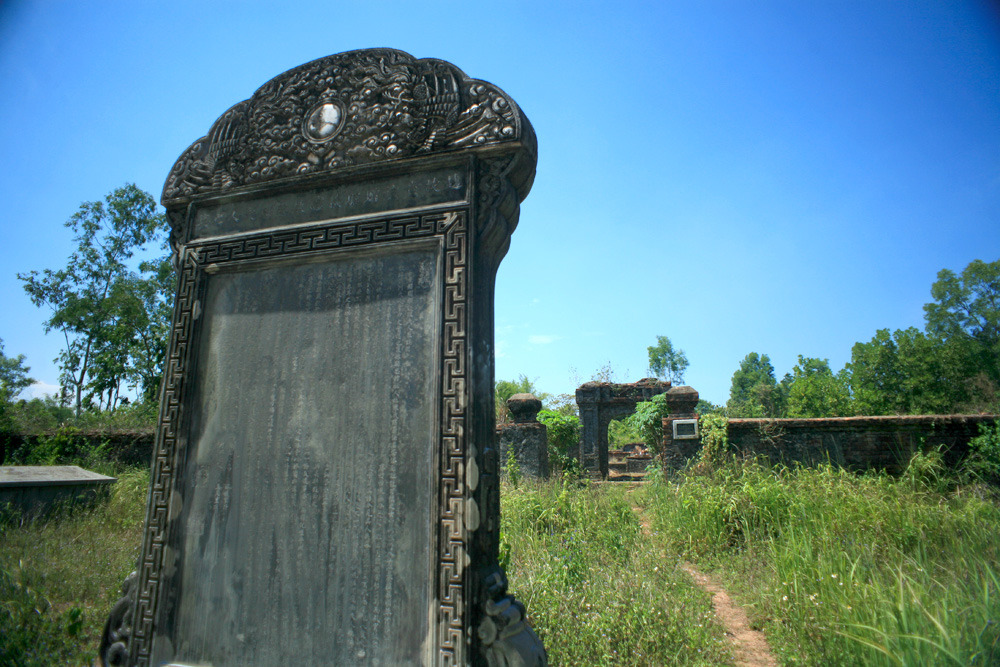
Notably, Chiêu Nghi’s tomb is separate from the cluster of Nguyễn kings’ tombs, standing alone as a quiet testament to a gentlewoman in a court filled with change.
Centuries later, the tomb retains most of its original architecture, including a meticulously carved screen, a stone stele inscribed with the words “Chiêu Nghi,” and a lush green setting that exudes an air of mystery, fantasy, and tranquility. This humility has made it a sought-after destination for those fascinated by history, ancient architecture, and those seeking serenity within the bustling ancient capital.
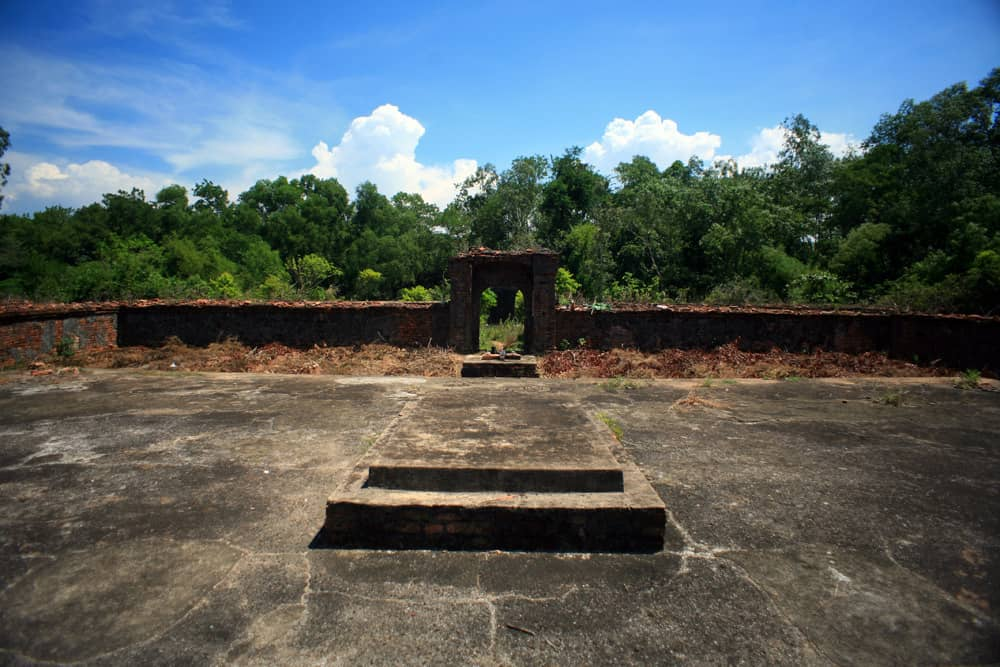
The tomb’s simplicity belies its historical significance.
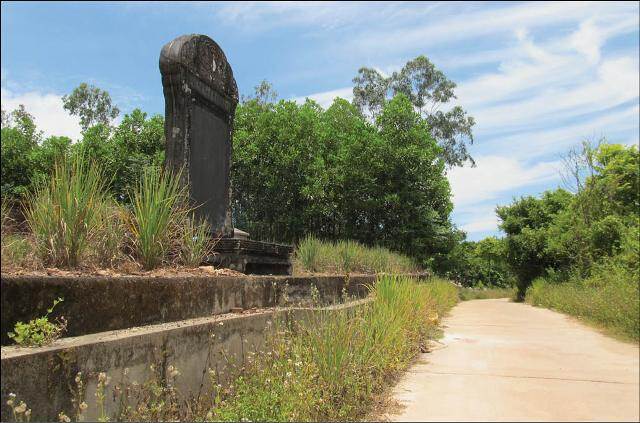
As the route to the tomb is rather secluded, it is advisable to travel in groups or with a local guide or tour operator.
Today, although not a famous tourist destination, the tomb attracts those passionate about exploring ancient relics and folk culture. Just a 30-minute motorbike ride from the city center, following the direction of Tuần Bridge – Minh Mạng Tomb, visitors will find this peaceful tomb nestled among pine trees. Many groups have chosen this location for photo shoots and historical documentation. It is also an ideal spot for those seeking a tranquil getaway from the hustle and bustle of daily life.
The Ultimate Guide to Hue’s Best Free Attractions: Snap-Worthy Spots to Explore This Summer
The ancient city of Hue offers the perfect balance for those seeking a scenic escape without breaking the bank. With its rich history, stunning landscapes, and affordable attractions, Hue is a must-visit destination in Vietnam. Imagine immersing yourself in the imperial grandeur of the past while exploring the picturesque countryside and enjoying the region’s unique cultural offerings. Whether you’re a history enthusiast, nature lover, or simply seeking a cost-effective getaway, Hue is a place where you can create unforgettable memories without sacrificing your budget.

























